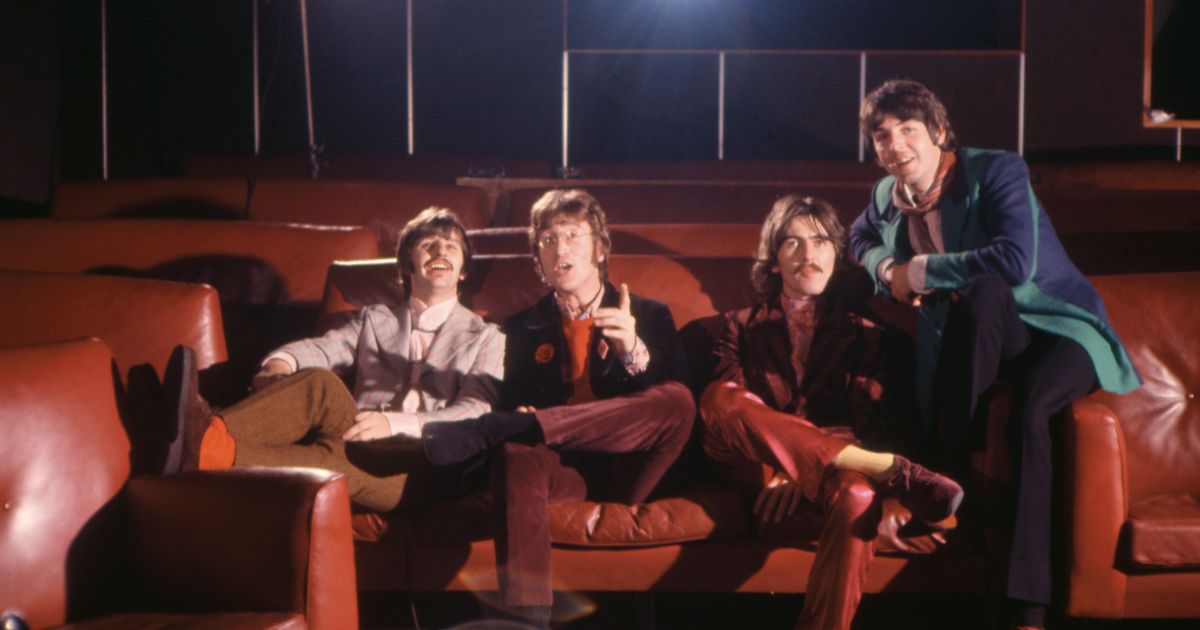Why The Terminator Franchise Should Return To Its Slasher Horror Roots

Why The Terminator Franchise Should Return To Its Slasher Horror Roots
James Cameron’s The Terminator closely followed the template of slasher films of the early 1980s while adding a time travel twist, and future movies in the franchise should get back to those horror roots. James Cameron began his career in horror, helming Piranha II: The Spawning, and he used the experience of making a low-budget horror film for the high concept premise of The Terminator. Arnold Schwarzenegger’s Terminator in the original film was an unstoppable killing machine stalking “final girl” Sarah Connor (Linda Hamilton), not unlike the iconic slasher movie villains Michael Myers and Jason Voorhees that proceeded him.
However, the following sequels abandoned the horror elements that made the original Terminator so intense exclusively favoring sci-fi and action, much to the detriment of the franchise. Terminator 2: Judgment Day took a wildly different approach to the Terminator character, portraying him as a sympathetic hero instead of a villain. Filling in for the villain role was Robert Patrick’s T-1000, a liquid metal Terminator who could mimic other people and form his appendages into blunt weapons. While the T-1000 was a terrifying presence, the very nature of its shape-shifting form moved the film’s threat from a humanoid terror into full uncanny sci-fi territory, distancing itself from the grounded horror of the original film’s Terminator.
While Terminator 2 is widely regarded as one of the best sequels of all time, the Terminator franchise needs to go back to the original Terminator’s slasher movie roots is that every sequel following T2 tried to mimic its success to increasingly diminished effect. The franchise’s villains became more over-the-top, whether it’s the Transformer-like T-X of Terminator 3: Rise of the Machines or the nanomachine hybrid that John Connor became in Terminator Genisys. The need to constantly one-up the T-1000 resulted in fantastical villains who strayed further from the simple horrors of the original’s T-800. The films suffered as a result, with the focus being put on increasingly complex sci-fi instead of the heart of it still being a horror-tinged story of survival.

The closest film to get back to the gritty nature of the original Terminator was Terminator Salvation, which pitted humans against machines in the distant future of 2018, focusing on John Connor’s resistance fighters. Making director McG’s Terminator Salvation more of a war film than a sci-fi action somewhat grounded it in reality, but the futuristic setting made it difficult to sympathize with the protagonists. Despite occasional flashes of it in the sequels, the simplicity of the original Terminator film and the relatability of Sarah Connor dealing with unknown futuristic horrors has been sorely missed in the subsequent films in the franchise.
James Cameron’s The Terminator benefited from having a low budget and a director who understands how to ground a simple time travel story with horror. Giving Arnold Schwarzenegger’s Terminator the characteristics of a slasher villain in the original film gave it a terrifying intensity that has not been felt in the series since. The increasingly complex storylines and villains of the Terminator franchise would benefit from giving the spotlight back to the original’s slasher horror sensibilities.
Related News & Content
-

Use wp.media templates to create totally custom modal
Use wp.media templates to create totally custom modal,Following up on this answer I'm trying to determine how to create a modal with completely unique menu items/content than the media modal. If you add a new state you can add a new menu tab and hav... Tags: media modal stackexchange.com WordPress Development Stack Exchange -

Get post by tag
Get post by tag,I want to get several post by tag. So I try to use get_posts() function: <?php $args = array( 'numberposts' => '3', 'post_status' => 'publish', 'tag' => 'travel' ); $ Tags: functions posts query posts stackexchange.com WordPress Development Stack Exchange -

Elementor + ACF: How to insert dynamic JSON-LD formatted code into ACF field without sanitizing the script tag?
Elementor + ACF: How to insert dynamic JSON-LD formatted code into ACF field without sanitizing the script tag?,On a normal website, I am able to add JSON-LD structured data, such as below, into a Elementor HTML widget, in a proper way. However, as soon as I insert JSON-LD format into an ACF field (Textarea)... Tags: advanced custom fields php stackexchange.com WordPress Development Stack Exchange -

Gutenberg InnerBlocks noallowedblocks on parent but allowedblock on Child
Gutenberg InnerBlocks noallowedblocks on parent but allowedblock on Child,This is a continuation of the following post: Custom Gutenberg block with nested InnerBlocks renderAppender not displaying add button I solved one problem but created a different problem. I'm recr... Tags: block editor plugin development stackexchange.com WordPress Development Stack Exchange -

Delay Issue: Using Wget with JSON Endpoint – Need Help Understanding Headers
Delay Issue: Using Wget with JSON Endpoint – Need Help Understanding Headers,On a WooCommerce website, I have a REST endpoint created with register_rest_route that returns a JSON response. To perform a routine with a certain frequency and urgency, I have added this instruct... Tags: rest api stackexchange.com WordPress Development Stack Exchange -

How do I change top header background color
How do I change top header background color,Please refer to website: https://virginiafrank.com I cannot get the top header background color (or phone numbers) to change color. I would prefer the background gold and text black. I can't make t... Tags: headers stackexchange.com WordPress Development Stack Exchange -

How to display the_tags() as plain text
How to display the_tags() as plain text,the_tags by default is displaying as URL. I need to display it as plain text to insert inside HTML attribute. <?php $tag = the_tags(''); ?> <div class="image-portfolio" data-section... Tags: stackexchange.com tags WordPress Development Stack Exchange -

Give to site admin the option to "skip confirmation email" when adding new user
Give to site admin the option to "skip confirmation email" when adding new user,in wordpress multisite when we give to site admin the option to add new users, site admin dont have the "checkbox" to add the new user without sending the user email with link activation (see the Tags: email verification multisite stackexchange.com users WordPress Development Stack Exchange -
Facing Hamas and Tehran, Israel is left with only vengeful madness | Opinion
Facing Hamas and Tehran, Israel is left with only vengeful madness | Opinion,Despite the Terrible Disaster on October 7, and the Failures It Exposed, Israel Is Still Convinced That the Image of the Mad Man Will Ensure Its Security -

Toyota’s Super Bowl Ad Relies on Car Challenges, Not Famous Faces
Toyota's Super Bowl Ad Relies on Car Challenges, Not Famous Faces,Toyota decided just weeks ago to run a Super Bowl commercial, and is betting on a spot that has no celebrities or special effects. Tags: Keycat Keytags Super Bowl Commercials Toyota variety.com -

Release the Beatles Jerk-off Cut
Release the Beatles Jerk-off Cut,Sam Mendes is making four Beatles movies, one for each Beatle. But if none of the movies include the legendary story of John and Paul’s days of group masturbation, Mendes will have blown his wad for naught. Tags: Keycat Keytags vulture.com -

There’s a Great Movie to Be Made About Bob Marley’s Story. One Love Is Not It.
There’s a Great Movie to Be Made About Bob Marley’s Story. One Love Is Not It.,Walking away from ‘Bob Marley: One Love,’ you may feel you know less about the great musician than you did going in. Tags: Keycat Keytags vulture.com -

A24 Reveals I Saw the TV Glow Trailer, Announces Star-Studded Soundtrack
A24 Reveals I Saw the TV Glow Trailer, Announces Star-Studded Soundtrack,A24 has shared the trailer for the upcoming horror film I Saw the TV Glow and announced the soundtrack with Phoebe Bridgers, Alex G, and Caroline Polachek,. Tags: consequence.net Keycat Keytags -

Tom Hanks to Narrate Masters of the Air Companion Doc, The Bloody Hundredth
Tom Hanks to Narrate Masters of the Air Companion Doc, The Bloody Hundredth,Apple TV+ has announced The Bloody Hundredth, a companion documentary to Masters of the Air narrated by Tom Hanks. It premieres on March 15th. Tags: consequence.net Keycat Keytags -

Benson Boone Eyes Second Week at No. 1 In U.K. With ‘BeautifulThings’
Benson Boone Eyes Second Week at No. 1 In U.K. With ‘BeautifulThings’,Olivia Rodrigo is on track for the week's highest debut with "Obsessed." Tags: billboard.com Keycat Keytags -

West Virginia Gov. Justice vetoes bill that would have loosened school vaccine policies
West Virginia Gov. Justice vetoes bill that would have loosened school vaccine policies,West Virginia Republican Gov. Jim Justice broke with the GOP-majority Legislature to veto a bill that would have loosened one of the country’s strictest school vaccination policies Tags: 108569448 abcnews.go.com Article Children General news Health Immunizations Keycat Keytags Medication Politics U.S. News -

Blondshell and Bully Team Up For New Single “Docket”
Blondshell and Bully Team Up For New Single “Docket”,Blondshell has teamed up with Alicia Bognanno of Bully for the newly released single "Docket." Listen to the track here. Tags: Keycat Keytags pastemagazine.com -

Carol Kirkwood stuns in figure-hugging dress amid BBC Breakfast technical chaos
Carol Kirkwood stuns in figure-hugging dress amid BBC Breakfast technical chaos,CAROL Kirkwood stunned in a figure-hugging dress amid a technical blunder. BBC Breakfast was flung into chaos this morning after a string of sound issues. However Carol, 61, was all smiles as she p… Tags: BBC BBC Breakfast BBC ONE Carol Kirkwood mirror.co.uk The Scottish Sun TV News TV UK daytime TV -

Families ‘to sue prison’ where loud inmates ‘terrorise kids’ with screaming
Families 'to sue prison' where loud inmates 'terrorise kids' with screaming,Residents living next door to a new prison who say their kids have to sleep wearing headphones and some leave during weekends due to the racket are threatening to sue the prison service Tags: mirror.co.uk Neighbours from hell prisons Scottish government The Mirror -

Doctor Strange’s Secret Wars Role May Be More Important Than You Thought – Looper
Doctor Strange's Secret Wars Role May Be More Important Than You Thought - Looper,According to entertainment leaker Alex Perez, Doctor Strange will find himself confronting his inner struggles as he headlines "Avengers: Secret Wars." Tags: Fiction Looper looper.com Marvel Cinematic Universe Science Star Wars The Universal Monsters franchise -
Are Katie Maloney and Tori Keeth Officially Dating?
Are Katie Maloney and Tori Keeth Officially Dating?,Is Vanderpump Rules star Katie Maloney officially dating Scheana Shay's "nanny" Tori Keeth after her tryst with Tom Schwartz? Tags: guitar.com Reality News Reality Tea -

Blondshell and Bully Team Up For New Single “Docket”
Blondshell and Bully Team Up For New Single “Docket”,Blondshell has teamed up with Alicia Bognanno of Bully for the newly released single "Docket." Listen to the track here. Tags: Keycat Keytags pastemagazine.com -

An argument for the art of whistling
An argument for the art of whistling,Some of us whistle while we work, but what happens when your work is whistling? This week, host Brittany Luse is joined by professional whistler, Molly Lewis. Lewis' catalogue spans across the film and music industries, from features on the Barbie soundtrack to performances alongside Karen O. From NPR's New York Bureau, Brittany sits down with Lewis to talk about the world of competitive whistling, how she hones a craft many people see as fidgeting, and why older generations are more likely to whistle. This episode also features a special live performance with songs from Lewis' new album, On The Lips.Want to be featured on the show? Record a question via voice memo for 'Hey Brittany' and send it to [email protected]. Tags: Barbie Culture molly lewis Music Music Interviews NPR NPR.org Performing Arts Whistler whistling -

A new play peers into a band’s life, from the inside
A new play peers into a band's life, from the inside,Stereophonic, a new play on Broadway with music by Arcade Fire's Will Butler, tracks the volatile creation of a rock and roll album over the course of a year in the 1970s. Tags: Culture Home Page Top Stories Music Music Features NPR NPR.org Performing Arts Theater -

MediaTek Dimensity 6300 chipset announced
MediaTek Dimensity 6300 chipset announced,It features an overclocked main Cortex-A76 CPU cluster now clocked at 2.4GHz. MediaTek announced its latest midrange chipset with the Dimensity 6300. This... Tags: gsmarena com Mediatek -

vivo confirms V30e is launching on May 2
vivo confirms V30e is launching on May 2,The phone will arrive in India with a 50 MP Sony IMX882 camera. The vivo V30e was teased by the company yesterday, and today we get a confirmation of its... Tags: gsmarena com vivo
Warning: file_get_contents(https://www.scienceradars.com/wp-output-content.php?pg=1&cat=&kw=&lvl=): Failed to open stream: HTTP request failed! HTTP/1.1 526 in /home/wwwroot/xuenou.com/wp-content/themes/chromenews/template-parts/content.php on line 169
Warning: file_get_contents(https://www.bayuexiang.com/wp-output-content.php?pg=1&cat=&kw=&lvl=): Failed to open stream: HTTP request failed! HTTP/1.1 526 in /home/wwwroot/xuenou.com/wp-content/themes/chromenews/template-parts/content.php on line 173
TrendRadars
The Most Interesting Articles, Mysteries and Discoveries

Decoding Dubai Floods: Artificial Rain Or Climate Change – What Caused Havoc After Heavy Rains? EXPLAINED

‘IMPORTANT ADVISORY’: Indian Embassy In UAE Urges Rescheduling Of Non-Essential Travel Amid Floods In Dubai

Netanyahu Says Israel Will Do Everything To Defend Itself, Will Decide How To Respond To Iran’s Attack

Afterpay increasing credit limits… what could go wrong?










































































